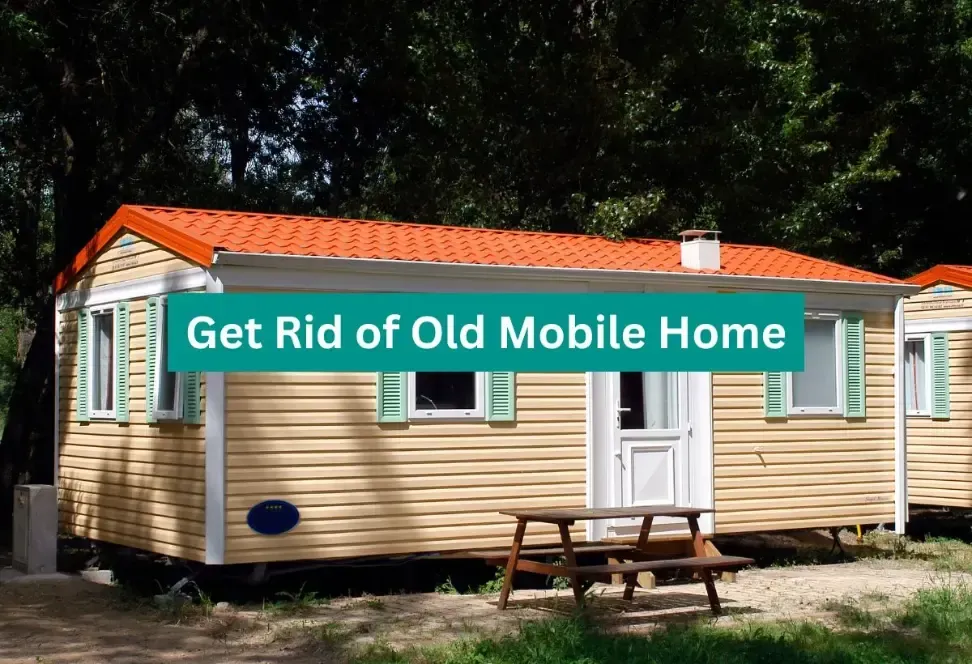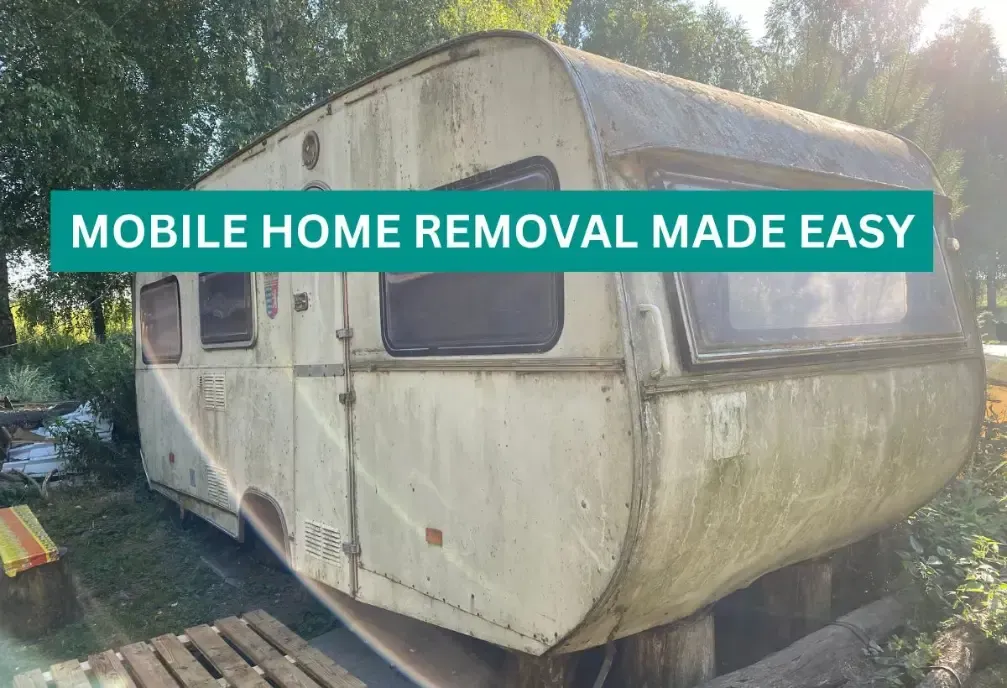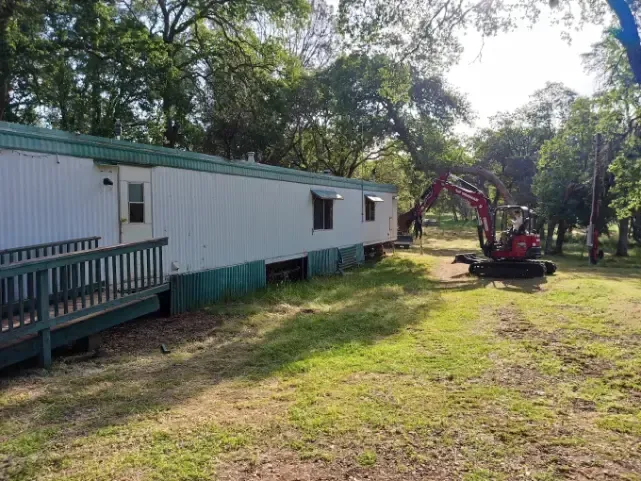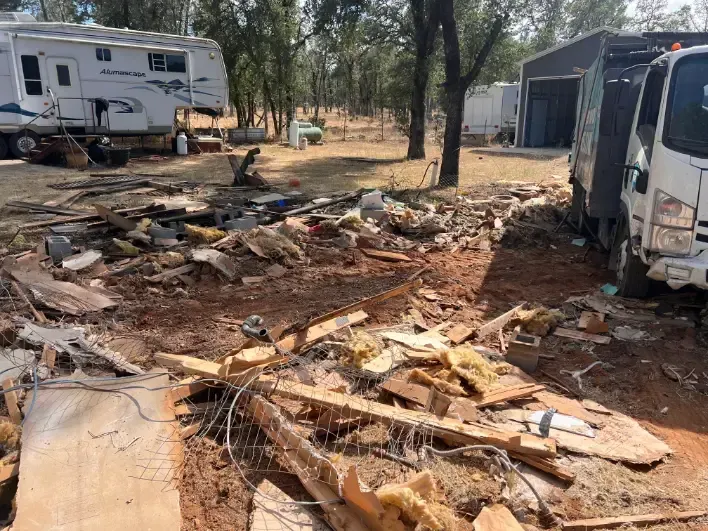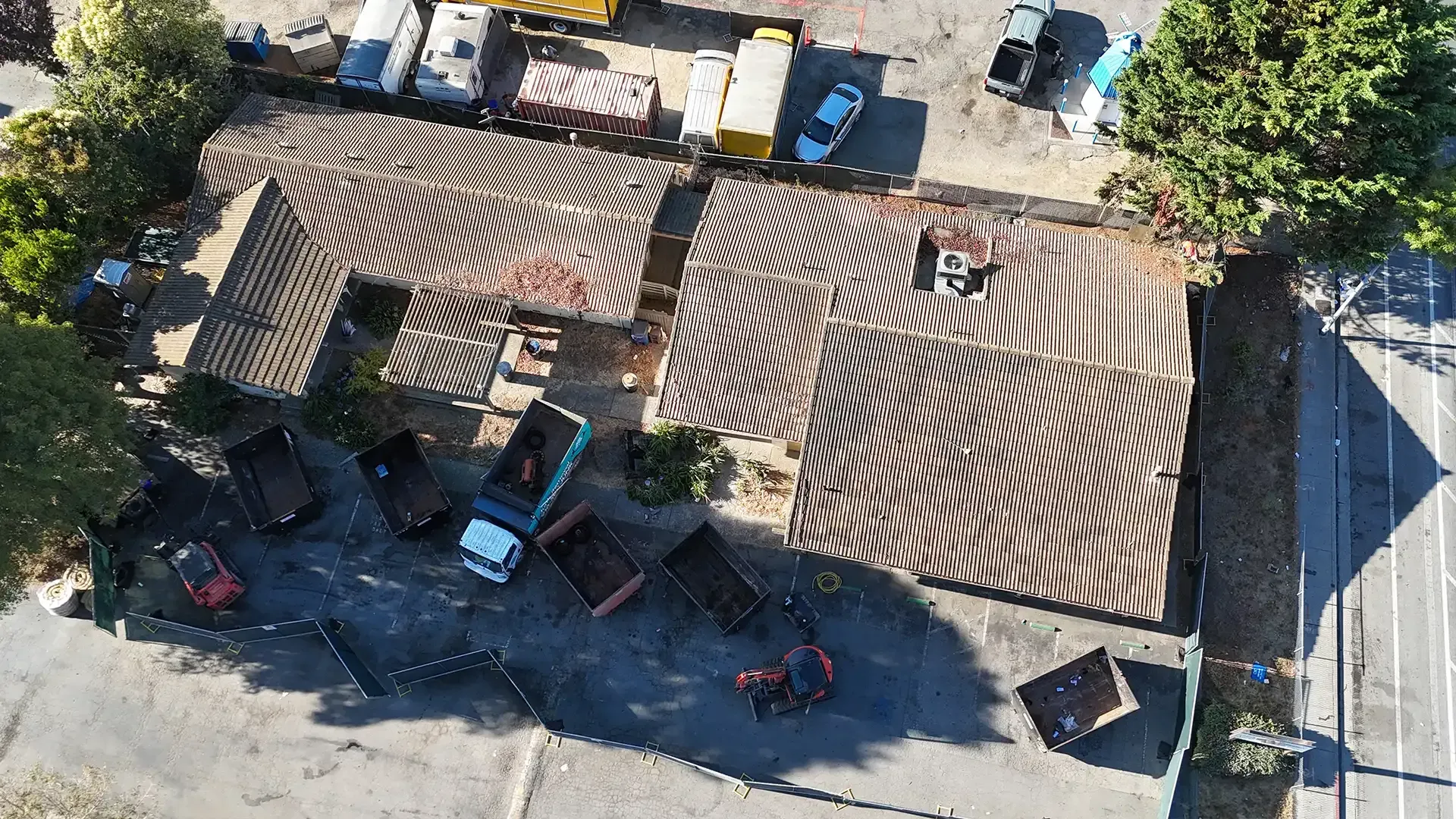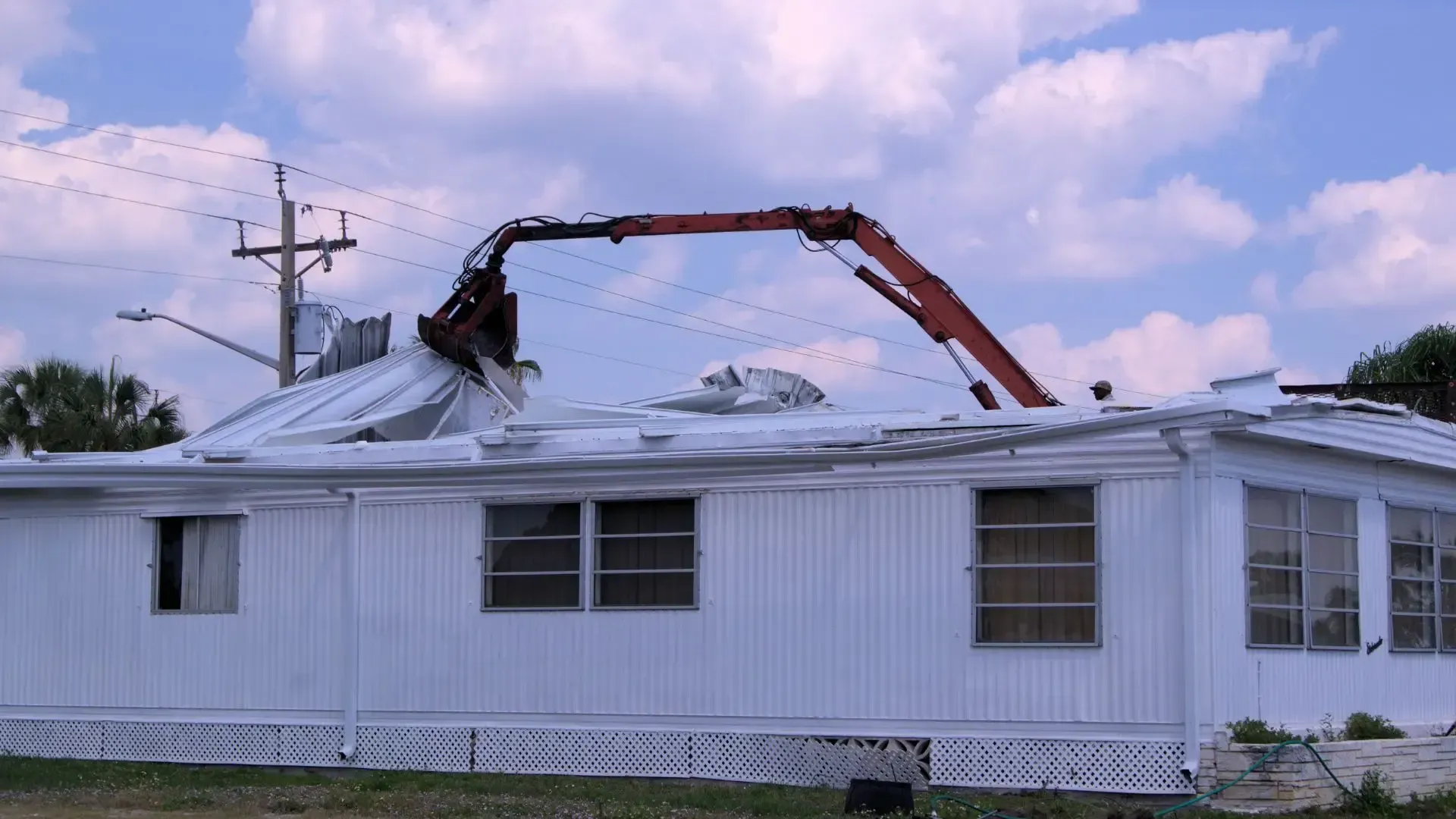The Dangers of Asbestos in Demolition Projects (and How to Prevent Costly Mistakes)
If you're planning a demolition project, there’s a silent danger you can’t afford to ignore: Asbestos
This hazardous material was widely used in building construction throughout the 20th century and can still be found in older homes, commercial buildings, and even industrial sites. While it’s harmless when undisturbed, demolition activities can release dangerous asbestos fibers into the air, which can cause serious health risks like mesothelioma, to workers, property owners, and nearby residents
Let’s explore the risks of asbestos exposure during demolition projects, and more importantly, how to prevent issues from arising on your job site.
Why Asbestos is Dangerous During Demolition
Asbestos fibers are microscopic and easily inhaled. When disturbed, they can stay airborne for hours and travel great distances, creating a significant health hazard.
Health Risks of Asbestos Exposure:
- Lung Cancer: Prolonged asbestos exposure increases the risk of lung cancer, particularly in smokers.
- Mesothelioma: A rare, aggressive cancer that affects the lining of the lungs, chest, or abdomen.
- Asbestosis: A chronic lung condition caused by inhaling asbestos fibers, leading to scarring and breathing issues.
Unlike some safety risks that are immediately noticeable, asbestos-related illnesses take years to develop. This delayed onset makes it critical to take every precaution to prevent exposure from the start of your demolition project.
Where Asbestos is Commonly Found in Older Structures
Knowing where asbestos may be hiding in a building can help you take the right precautions. Here’s a list of common places asbestos is found:
- Roofing materials (shingles, flashing)
- Insulation (especially around pipes, boilers, and ducts)
- Flooring (vinyl tiles, adhesives)
- Wallboard and plaster
- Ceiling tiles and coatings (popcorn ceilings are a notorious culprit)
- Cement products (siding, pipes)
- HVAC systems (duct insulation)
Buildings constructed before 1980 are especially likely to contain asbestos in these areas. However, even newer structures could have remnants of asbestos materials, particularly if they’ve been renovated over time. Oftentimes you can't actually tell just by looking at these areas.
How to Identify Asbestos on a Job Site
Before any demolition work begins, it’s essential to determine if asbestos is present. Here’s how to identify and manage asbestos risks:
1. Conduct an Asbestos Survey
Hiring a licensed asbestos inspector to conduct a thorough survey is step one. The inspector will:
- Identify materials that contain asbestos
- Assess their condition
- Provide recommendations for removal or containment
This step is legally required in many jurisdictions before any demolition or renovation work can begin.
2. Test Suspicious Materials
If an asbestos survey isn’t immediately feasible, ensure any suspicious materials are tested in a lab. Never assume a material is safe just because it "looks fine."
3. Assume the Worst (If You Don’t Know)
If you’re unsure whether materials contain asbestos, treat them as if they do. It’s better to err on the side of caution and take necessary safety measures.
Preventing Asbestos Issues During Demolition
Once asbestos is identified, follow these best practices to prevent issues during demolition.
1. Hire a Certified Asbestos Abatement Contractor
Demolition contractors are not typically licensed to handle asbestos removal. You’ll need a specialized contractor certified in asbestos abatement to remove hazardous materials safely and legally. This is crucial for protecting your crew, the environment, and yourself from liability.
2. Use Proper Personal Protective Equipment (PPE)
Ensure all workers on the demolition site wear appropriate PPE to minimize exposure risks:
- Respirators with P100 filters
- Disposable coveralls
- Safety goggles
- Gloves and boot covers
Remember: PPE must be properly fitted and regularly maintained to be effective.
3. Implement Dust Control Measures
Dust from demolition can carry asbestos fibers far beyond the immediate job site. Here’s how to keep dust under control:
- Wet materials during demolition to suppress dust
- Use HEPA-filtered vacuums to clean up debris
- Seal off work areas with plastic sheeting to prevent fiber spread
4. Dispose of Asbestos Materials Properly
Asbestos-containing materials (ACMs) must be disposed of according to local, state, and federal regulations. This often involves:
- Double-bagging ACMs in labeled, airtight containers
- Transporting them to approved hazardous waste facilities
Improper disposal can result in hefty fines and serious environmental hazards.
What to Do If You Discover Asbestos During Demolition
Even with thorough pre-project inspections, asbestos can sometimes be uncovered during the demolition process. Here’s what to do if that happens:
- Stop Work Immediately: Do not continue demolition activities if asbestos is discovered unexpectedly.
- Isolate the Area: Seal off the affected area to prevent the spread of fibers.
- Contact a Certified Abatement Contractor: Bring in professionals to handle the removal and safe disposal of the material.
- Notify Local Authorities: In many jurisdictions, you must report any unexpected asbestos findings to the local environmental health department.
Legal Consequences of Mishandling Asbestos
Failing to follow asbestos safety protocols can result in significant penalties:
- Fines: Regulatory agencies like OSHA and the EPA impose fines on contractors who violate asbestos handling rules. These fines can reach up to $25,000 per day for non-compliance.
- Project Shutdowns: Authorities can halt demolition projects if asbestos safety measures aren’t followed.
- Lawsuits: Property owners, workers, or residents exposed to asbestos fibers can file lawsuits for damages, including medical expenses and lost wages.
Demolition Tip: Test all job sites before demolishing
Asbestos is one of the most dangerous risks you’ll encounter on a demolition job site. Proper preparation and planning can save your project from costly delays, legal troubles, and health risks.
If you’re unsure whether your project site has asbestos, don’t take the risk. Contact a certified asbestos inspector and abatement team before starting any work. Demo Patrol offers testing services!
Contact us at
Demo Patrol today! With our expertise, commitment to safety, and dedicated customer service, we're here to ensure your demolition process is smooth and successful. Don't wait—reach out to us now at 916-409-6879 or
fill out the form here to get started on paving the way for your plans!

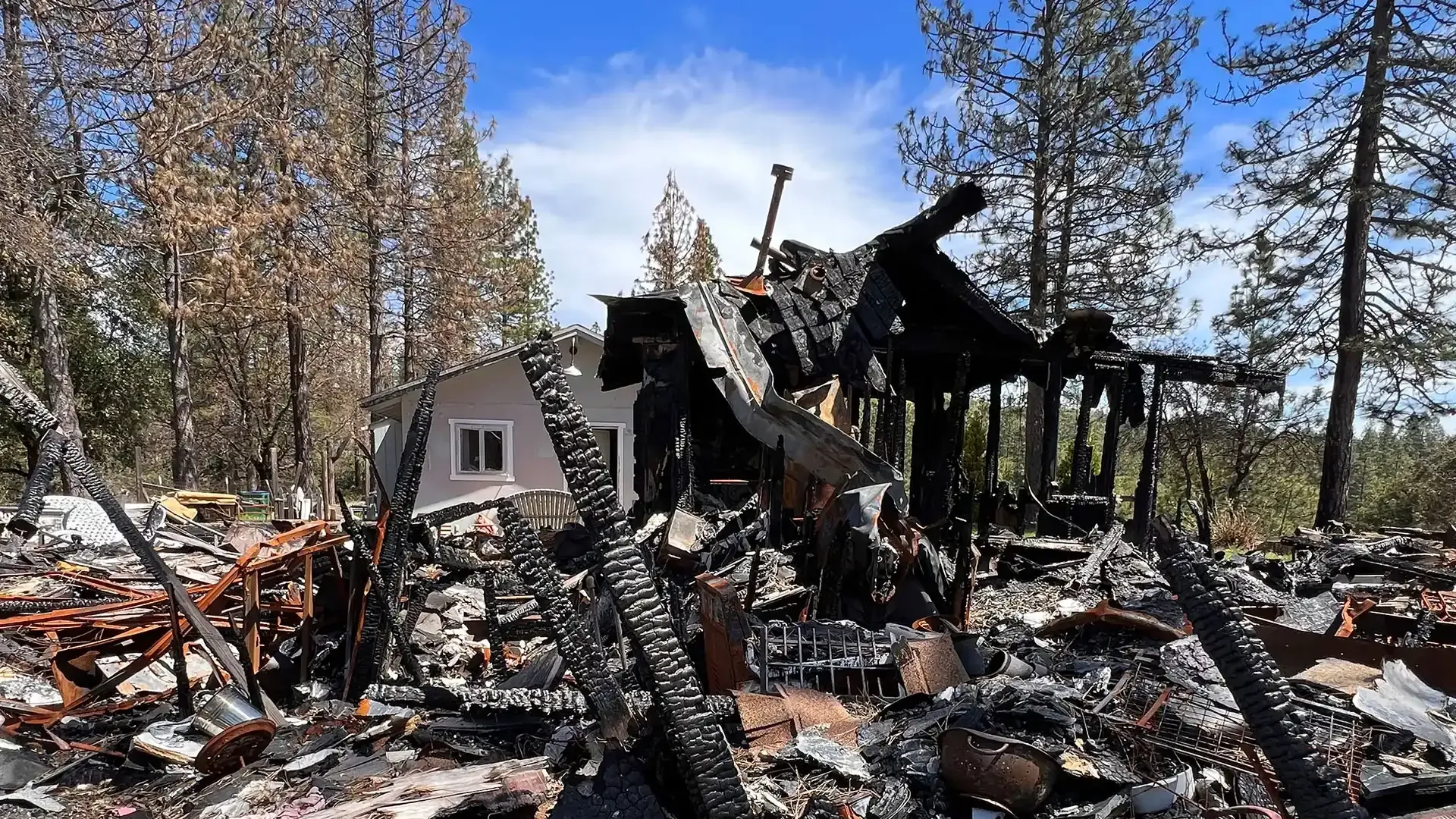
CONTACT INFO
Phone Number: 916 409 6879
OSHA-10 Certified Contractor
Licensed For Demolition In California
All Rights Reserved | Demo Patrol | Website Designed by Blue Crocus Solutions | Privacy Policy | TOS

